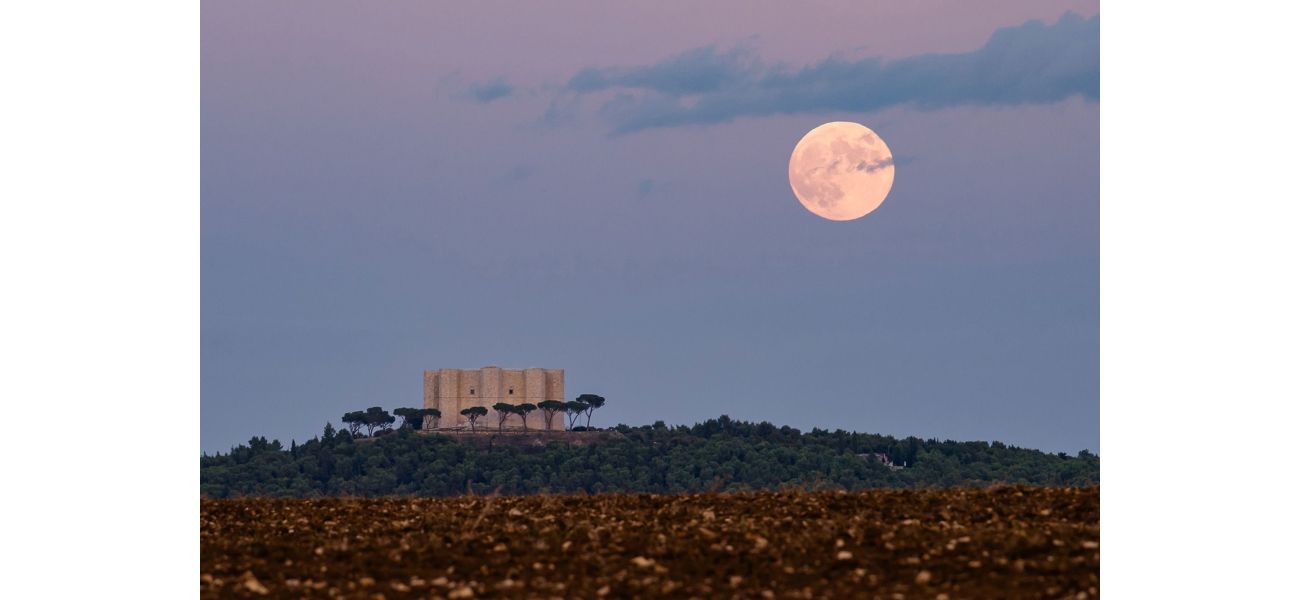A rare supermoon will illuminate the skies in Australia tonight, making it the closest one of the year.
Watch the beautiful moon rise at dusk tonight by looking towards the horizon.
October 17th 2024.

As the sun begins to dip below the horizon, it's the perfect time to look up and catch a breathtaking sight in the Australian skies this evening. The closest supermoon of the year is making its appearance, looming large and bright in the spring sky. It's known as the Hunter's Moon, and it's set to reach its fullest peak tonight at around 10:26pm in Victoria, New South Wales, Canberra, and Tasmania. For those in Queensland, the peak will be at 9:26pm, while South Australia will see it at 9:56pm. Western Australia will have a slightly earlier view at 7:26pm, and the Northern Territory can expect it at 8:56pm.
According to NASA, the silvery orb will be visible not just tonight, but also tomorrow night. This full moon is the third in a series of four consecutive supermoons expected this year. This phenomenon occurs because the moon's orbit around Earth is not a perfect circle, but rather an ellipse. This means that there are times when the moon is closer or further away from our planet. The point of closest proximity is known as perigee, and during this time, the moon is, on average, 363,300 kilometers from Earth. When a full moon coincides with perigee, we get to witness a supermoon event.
But what exactly makes a supermoon so special? Well, as the name suggests, it's when the moon is closer to Earth than usual. On average, the moon orbits at a distance of about 384,400 kilometers from our planet, but during this month's supermoon, it will be just 357,428 kilometers away. This makes it the closest full moon of 2024. During a supermoon, the moon may appear up to eight percent larger and 16 percent brighter than a regular full moon, as reported by EarthSky. However, it's important to note that the moon itself is not actually bigger or brighter than usual. It may simply appear that way because of its location near the horizon just after sunset. According to Dr. Robin L. Shelton, a professor of physics at the University of Georgia, the moon's color may also appear different due to optical effects caused by light passing through Earth's atmosphere.
The Hunter's Moon is the first full moon after the autumnal equinox, which took place on September 22 this year. This lunar event marks the changing of the seasons and has been celebrated by Indigenous peoples for centuries. Its name originated from the fact that this was the time when hunters would prepare for the long winter months ahead, benefiting from the moon's bright appearance. Hunting was also easier during this time as the fields had already been cleared out. This is just one of the many names given to October's full moon by different Indigenous nations. Others include the moon of the first frost, the time when corn is harvested, and the falling leaves moon.
One of the traditions around this time is the Feast of the Hunter's Moon, a re-creation of the fall gatherings that took place in the mid-1700s between French settlers and Native Americans at Fort Ouiatenon in Indiana. Tonight, as we witness the Hunter's Moon, we may also spot Jupiter, a red giant star called Aldebaran, and the star cluster Pleiades, according to EarthSky. Want to stay updated on all the latest breaking news, celebrity gossip, and sports updates? Join our WhatsApp channel for a private and ad-free experience. Your private details are safe with us, and you won't have to deal with any comments or algorithms. So why not give it a try?
According to NASA, the silvery orb will be visible not just tonight, but also tomorrow night. This full moon is the third in a series of four consecutive supermoons expected this year. This phenomenon occurs because the moon's orbit around Earth is not a perfect circle, but rather an ellipse. This means that there are times when the moon is closer or further away from our planet. The point of closest proximity is known as perigee, and during this time, the moon is, on average, 363,300 kilometers from Earth. When a full moon coincides with perigee, we get to witness a supermoon event.
But what exactly makes a supermoon so special? Well, as the name suggests, it's when the moon is closer to Earth than usual. On average, the moon orbits at a distance of about 384,400 kilometers from our planet, but during this month's supermoon, it will be just 357,428 kilometers away. This makes it the closest full moon of 2024. During a supermoon, the moon may appear up to eight percent larger and 16 percent brighter than a regular full moon, as reported by EarthSky. However, it's important to note that the moon itself is not actually bigger or brighter than usual. It may simply appear that way because of its location near the horizon just after sunset. According to Dr. Robin L. Shelton, a professor of physics at the University of Georgia, the moon's color may also appear different due to optical effects caused by light passing through Earth's atmosphere.
The Hunter's Moon is the first full moon after the autumnal equinox, which took place on September 22 this year. This lunar event marks the changing of the seasons and has been celebrated by Indigenous peoples for centuries. Its name originated from the fact that this was the time when hunters would prepare for the long winter months ahead, benefiting from the moon's bright appearance. Hunting was also easier during this time as the fields had already been cleared out. This is just one of the many names given to October's full moon by different Indigenous nations. Others include the moon of the first frost, the time when corn is harvested, and the falling leaves moon.
One of the traditions around this time is the Feast of the Hunter's Moon, a re-creation of the fall gatherings that took place in the mid-1700s between French settlers and Native Americans at Fort Ouiatenon in Indiana. Tonight, as we witness the Hunter's Moon, we may also spot Jupiter, a red giant star called Aldebaran, and the star cluster Pleiades, according to EarthSky. Want to stay updated on all the latest breaking news, celebrity gossip, and sports updates? Join our WhatsApp channel for a private and ad-free experience. Your private details are safe with us, and you won't have to deal with any comments or algorithms. So why not give it a try?
[This article has been trending online recently and has been generated with AI. Your feed is customized.]
[Generative AI is experimental.]
0
0
Submit Comment





